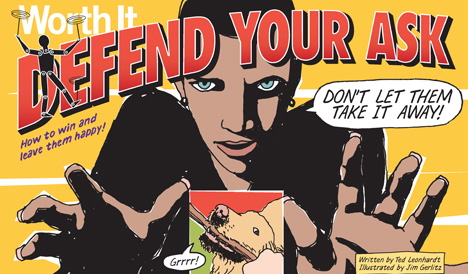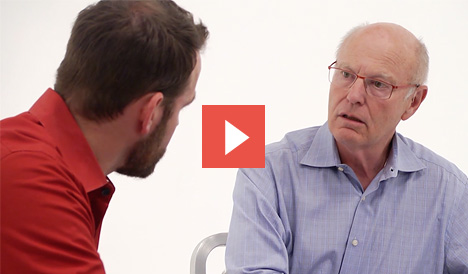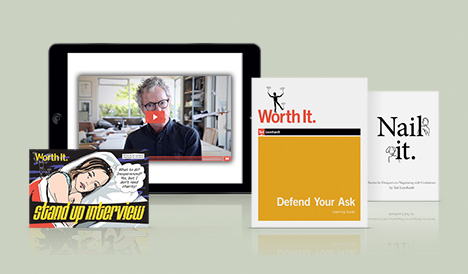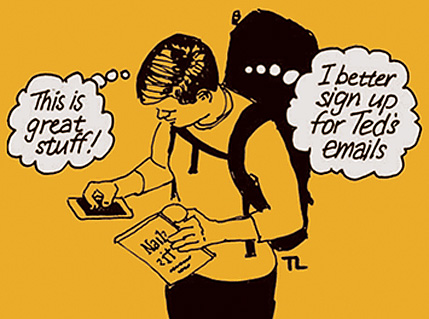Here’s How to Regain Control of a Negotiation

We were among the finalists, and I was simultaneously elated and terrified. Our prospective clients had interviewed eight firms for a huge opportunity and narrowed it down to three, proposing a briefing the next morning. We quickly emaiIed back that we couldn’t meet then, but could later that afternoon. Success: We’d scored the last meeting of the day, a good sign.
But wait, why did they want to meet again? We’d just met with them the day before. Why not just send us a “next steps” email?
They must want to ask for something unusual.
In situations like this one, a negotiation that seems to be playing into your hands can take an unexpected turn. In order to regain control, there’s a technique I call the “power shift” that it helps to have up your sleeve.
Assess the Situation
To start, take careful stock of the twists and turns that got you here. So, what did I know about the situation?
- The management team who interviewed the firms was very large — must’ve been 15 managers in that meeting. They were probably not in agreement on who to choose.
- The other two competitors were large global branding agencies. We were much smaller. Good! That meant we were distinct.
- The company was in a hurry to get this assignment completed. It was crunch time for them.
If you can do this mental arithmetic, you can pin down where your strengths lie, no matter what comes your way next. In my case, the likely outcome was that they’d ask us to do some spec work. This was pure intuition, but my guess was that they were worried we wouldn’t agree to that. If that hunch was correct, then saying “no” was our leverage.
Having some insights and making a guess at what might happen, right or wrong, was reassuring.
Keep Your Eye on the Ball
The next step is obvious: Watch vigilantly to see what comes next and whether it confirms or deviates from your expectations.
At the next day’s meeting, our prospective client brought a much smaller group, just five folks — one each from purchasing, marketing, and corporate communications, and two product designers. The guy who was advocating for us most was the marketing guy. The designers seemed to like us, too.
We met in another conference room, high in the headquarters tower. The view was amazing — harbor spread out, clouds streaming by. Coffee, tea, and soft drinks served. Weather and family discussed. All very nice. Once we were settled, they began by telling us how well-researched our presentation was and how much they liked our perspective. All of them chimed in with praise. I was wondering, “When’s the other shoe going to drop?”
And then our contact in marketing said, “We’re under tremendous pressure from investors to show progress on our turnaround plan. So, along with an estimate from you on the work, we need to see initial creative, too. We know this is difficult so we asked senior management for something to pay you.”
He was definitely nervous and, as I’d expected, worried we’d say no.
“We can pay you $25,000 upfront. We need the work completed in six weeks.”
Time to Take Back Control
Silence. All eyes are now on me. Here’s my chance to shift the dynamic, to stand apart from the competition. Thinking to myself, “I hope this works,” and pausing for effect, I look at my creative director on the right and my strategist on the left.
“I’m sorry — it’s cost us more than that already. Your job is very complex. Our preparation, analysis, and overall process — the stuff that makes you like our work — takes far more resources.”
Deep breath. “We’d need $100,000 to do what you’re asking.”
They’re shocked. “Everyone else accepted!”
“I’m disappointed, too. We had so hoped to work with you.”
Much scraping of chairs, followed by an awkward walk to the elevator, and forced goodbyes.
They call the next day and offer $75,000 — asking me not to tell my competitors — and I accept. Our chances of winning the whole contract are now very good indeed.
How to Know When to “Power Shift”
The reason this worked is because I knew where my team and I stood — and that’s a fundamental prerequisite for deploying the “power shift” tactic to regain the upper hand. Here’s how to do it.
- Establish that you’re there because they need you. If you’re a finalist, they must already have a very positive perception of what you can do for them.
- Look for small ways to gain leverage. Moving the meeting to be last in the day is one example. Being last helps because the client learns from earlier presenters — and often shares that with you directly, like revealing that others had accepted an offer of $25,000.
- Radiate confidence when you’re in the room. You must believe deeply in yourself; otherwise it’ll show. Remember, they can only get what you do from you.
- Use your vulnerability. I knew that I’d feel anxious as soon as I first accepted the challenge of going after this project. The way to deal with those fears is by talking with your team and deciding what to do about them collectively. When I discovered who we were up against, that fear helped me realize how their size might actually be a weakness — which turned my own sense of vulnerability on its head. If nothing else, it encouraged the competition to underestimate us.
- Look for clues about what’s driving the other party’s behavior. Being much smaller, we were an unconventional choice for this client. Including us was a sign that we had a good shot. There were two big agencies and us, meaning there was a simple choice: Big or small, conventional or unconventional.
- Read the room. We didn’t know why at the time, but we could feel a tension around our presence. Don’t ignore intangible hunches like this. It turned out an internal client group had championed us because of our small size.
- Fit in, but not too much. You also need to stand out and stand apart. We clearly were accepted as competitive with the giants we were up against, yet we were seen as a distinctive player. Ultimately it was important for us to confirm that impression in our client’s eyes.
- Stay humble. You might’ve figured it out, but remaining humble while showing strength is vastly more appealing than arrogance. Notice how politely — almost apologetically — I turned down the $25,000.
- Say no and mean it. Knowing when to walk away can be enormously powerful. Then they must pursue you. If they do, the ball is very much back in your court.
Shifting power is actually in the client’s interest as well as yours. Large clients, like this one, benefit from working with those who are comfortable asking for what’s needed to succeed, particularly when it comes to creative work. Strong convictions and a clear sense of direction, delivered politely, indicate to clients that you’ll deliver.
Originally published at Fast Company.




